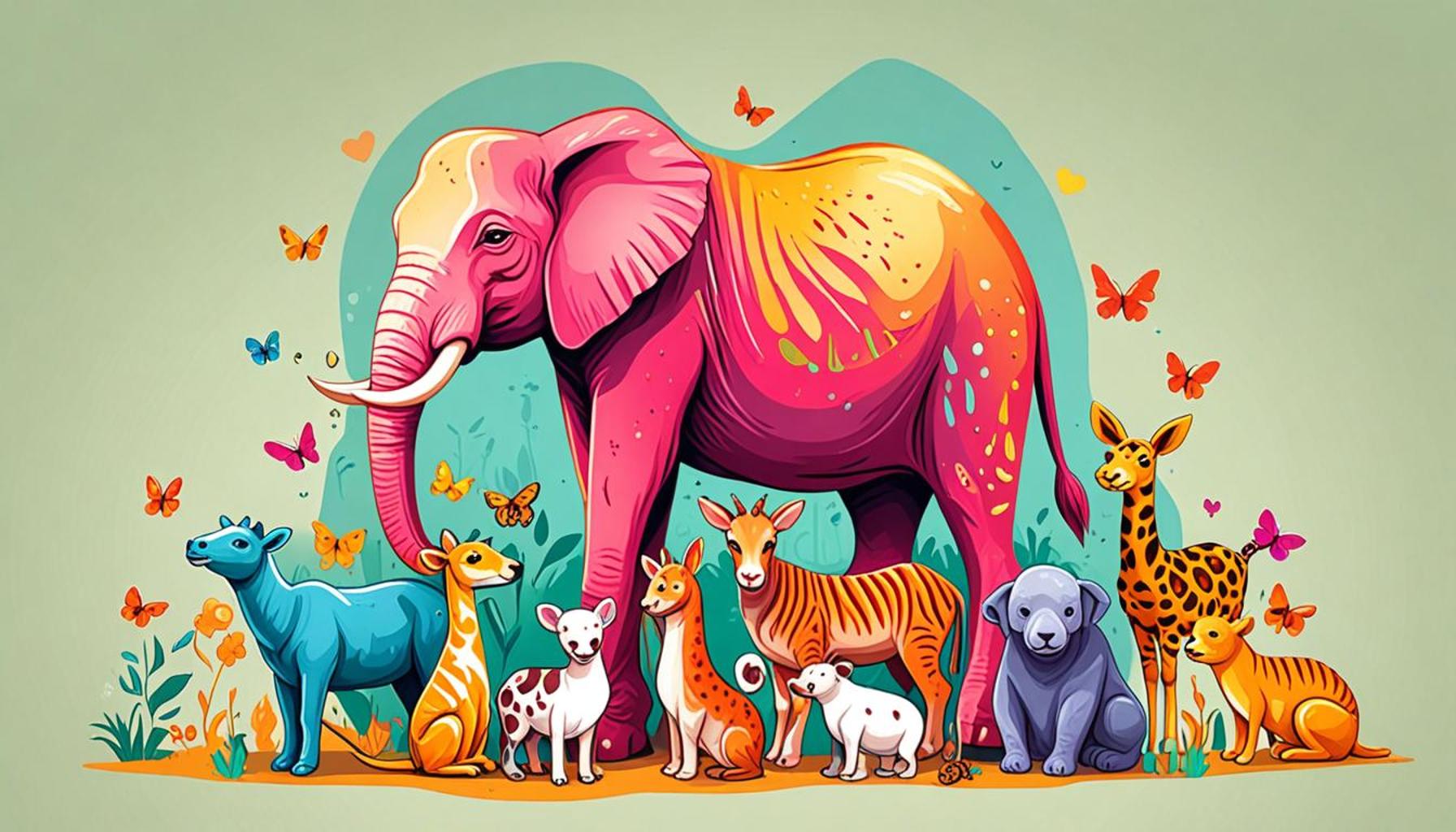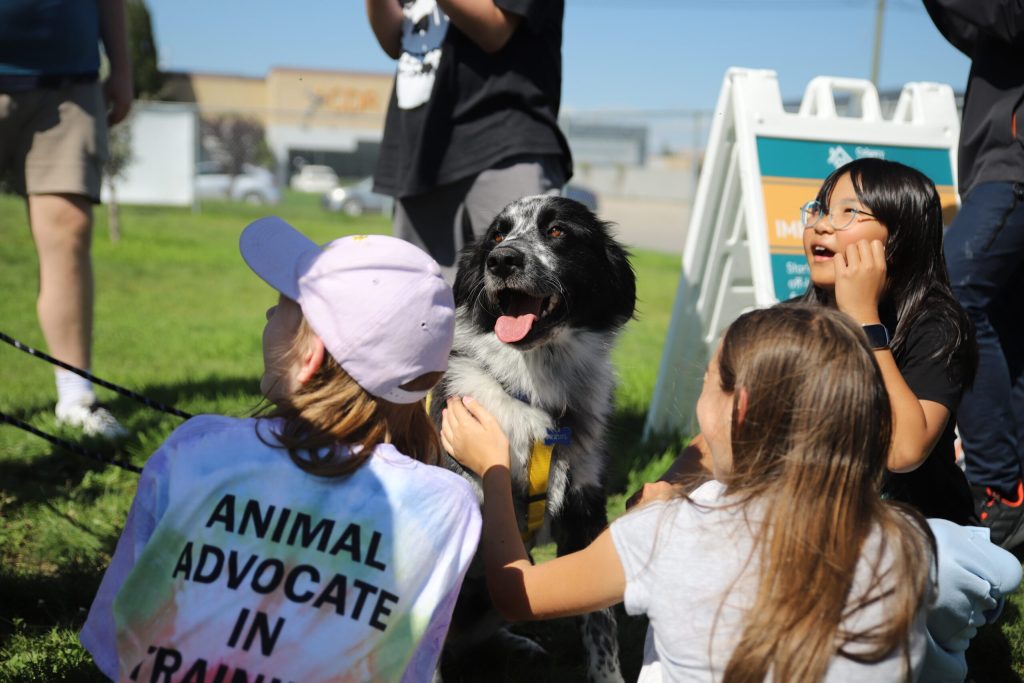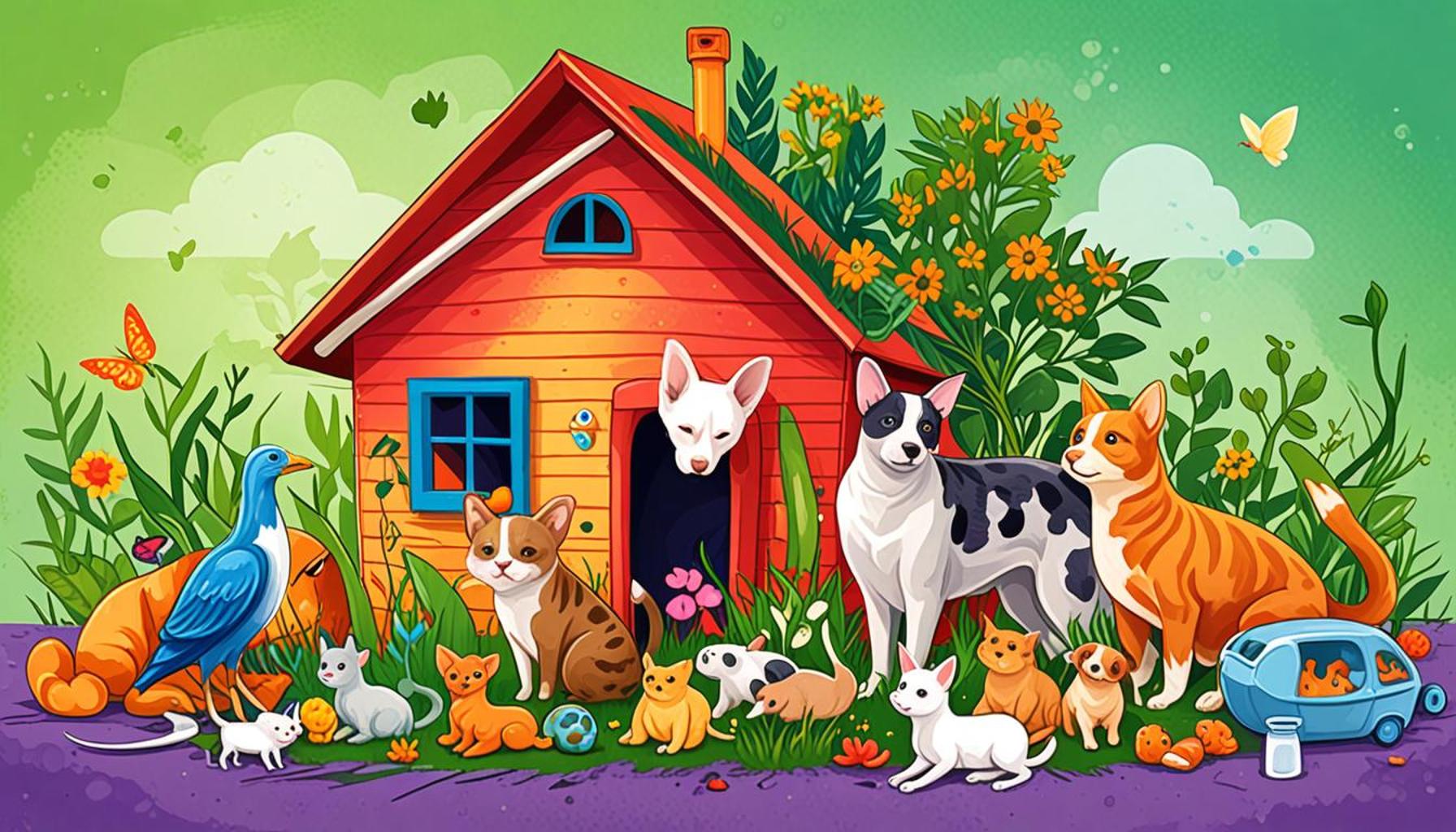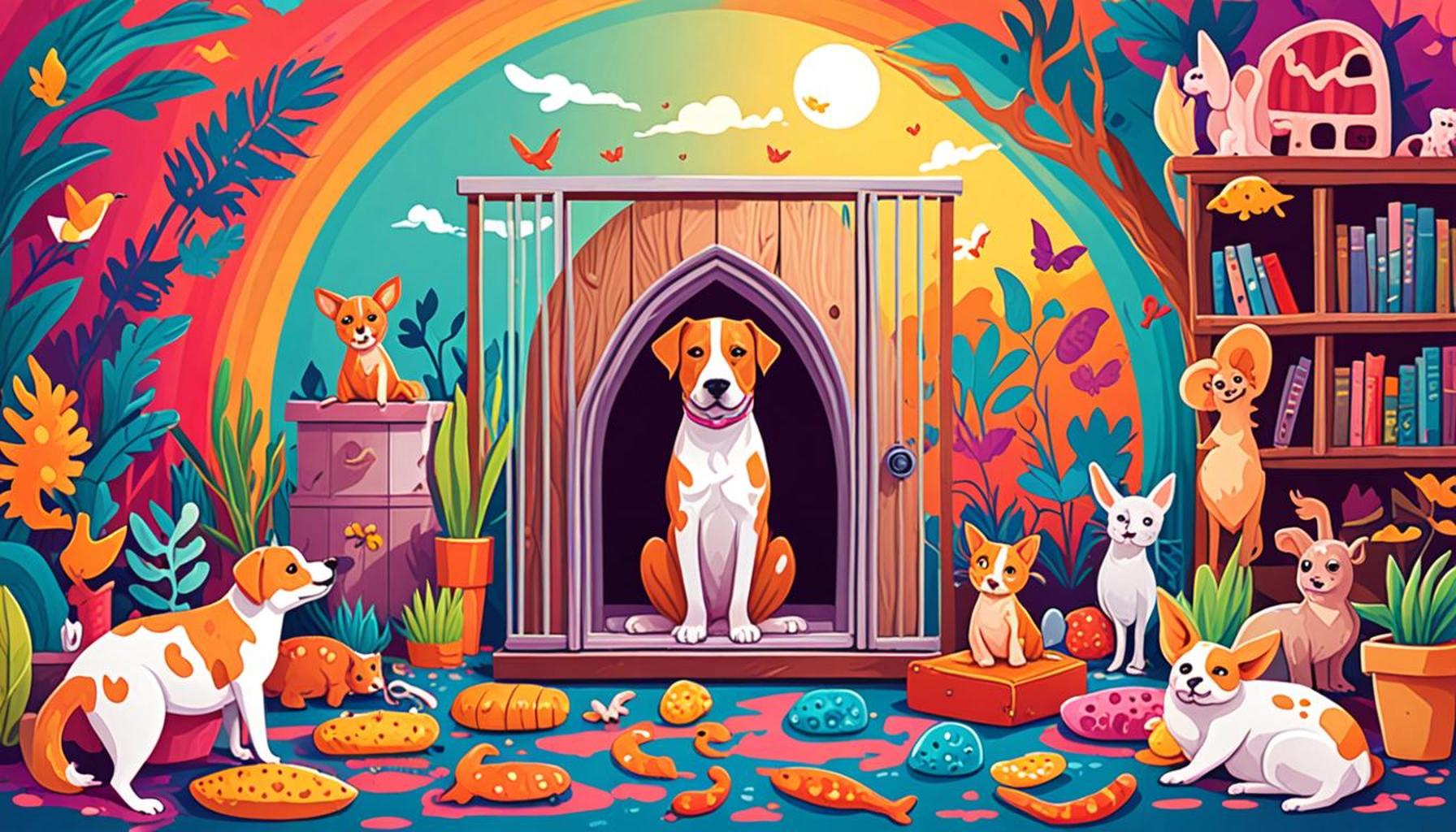Animal Adoption and Social Responsibility: How to Contribute to a Better Community

Embracing Compassion for Animals
Every year, millions of animals find themselves without homes, a sobering reality highlighting the importance of animal adoption. This situation not only affects the animals but also speaks volumes about our collective social responsibility as community members. Adopting an animal is more than just saving a life; it’s an opportunity to contribute positively to society.
The Impact of Animal Adoption
When individuals choose to adopt, they participate in a cycle of change, fostering:
- Reduction in homeless animal populations – Each adoption creates space for another animal in need. Nationwide, shelters are overflowing, and according to the American Society for the Prevention of Cruelty to Animals (ASPCA), about 6.5 million companion animals enter shelters every year in the U.S. By choosing to adopt, families can help mitigate this crisis.
- Positive community engagement – Adopting encourages friendships through shared values. Many adoptive pet owners form connections with one another through rescue organizations and pet-related community events, such as dog parks and adoption fairs, creating a support network that extends beyond animal care.
- Awareness of local shelters – Helping shelters gain visibility promotes future adoptions. When individuals advocate for their shelters by sharing their stories on social media or organizing local fundraisers, they can help provide much-needed resources and attention to facilities often running on tight budgets.
How You Can Get Involved
Becoming an advocate for animal adoption can take various forms. For those wondering where to start, consider:
- Visiting your local animal shelter – A simple trip to a nearby shelter can spark your interest and help change the life of a furry friend. Many shelters host “meet and greet” events, which allow potential adopters to interact with animals before making a decision.
- Volunteering time or resources – Shelters often rely on volunteers for daily operations, which can include walking dogs, feeding, and cleaning. Donating supplies or funds can also significantly impact a shelter’s ability to care for its animals.
- Spreading awareness through social media – Your platform can be a powerful tool. By sharing posts about adoptable animals or organizations that facilitate adoption, you can reach others who may be contemplating the decision to adopt.
By understanding the significance of animal adoption, you can help build a community that treasures every living being. Initiatives like the “Adopt Don’t Shop” campaign have gained traction across various social media platforms, emphasizing the message that adopting from a shelter is a compassionate choice. Together, we have the power to shape a more compassionate future, fostering responsible pet ownership while promoting the message that every animal deserves a loving home.
DISCOVER MORE: Click here to learn about common pet diseases and prevention

Transforming Lives Through Adoption
Animal adoption is not merely a charitable act; it serves as a direct pathway to transforming lives—both animal and human. With every adoption, an individual not only saves an animal from uncertain circumstances but also embraces a chance to enrich their own life through companionship and unconditional love. In the United States, statistics indicate that nearly 3.3 million dogs and 3.2 million cats enter shelters each year. Unfortunately, a significant portion of these animals never find a home. Understanding this reality amplifies the urgency of fostering adoption within communities.
The Benefits of Adopting Over Purchasing Pets
Choosing to adopt an animal carries distinct advantages over purchasing from breeders or pet stores. Here’s why adoption is a vital choice:
- Cost-effectiveness – Adopting pets usually includes vaccinations, initial veterinary care, and even microchipping—services that can amount to significant savings compared to purchasing a pet and incurring these costs separately.
- Healthier pets – Many rescue organizations and shelters conduct thorough health check-ups before allowing an animal to be adopted. This means that you are more likely to bring home a healthy companion.
- Psychological benefits – The act of saving an animal can have profound psychological benefits for the adopter. Studies have shown that interacting with pets can reduce stress, anxiety, and feelings of loneliness.
- Breaking the cycle of overpopulation – By adopting, you contribute to breaking the cycle of pet overpopulation. The more dogs and cats adopted from shelters, the fewer homeless animals are born, leading to less strain on community resources.
Creating Responsible Pet Owners
Part of the broader social responsibility that comes with animal adoption is understanding the commitment to being a responsible pet owner. This includes:
- Regular veterinary care – Ensuring your pet receives routine check-ups, vaccinations, and preventive treatments is crucial for their health and longevity.
- Training and socialization – Invest time in training your pet, which not only strengthens your bond but also positively impacts community dynamics. Well-behaved pets are less likely to end up in shelters.
- Spaying and neutering – Taking responsibility for spaying or neutering your adopted pet helps control the animal population and aligns with the social responsibility of every pet owner.
Adoption is not just a one-time act; it represents a lifelong commitment to nurturing and caring for an animal. Each adoption has the potential to transform both lives involved, sparking a ripple effect that can inspire others to follow suit. As communities work collaboratively towards awareness and advocacy for animal adoption, the landscape of our neighborhoods shifts, creating a culture where both animals and their human companions can thrive.
Animal adoption plays a crucial role in fostering social responsibility within communities. It acts as a conduit for social interaction, empathy, and compassion. By reaching out to adopt pets from shelters, individuals not only give animals a second chance at life but also promote a culture of kindness and responsibility. This action can inspire others to take similar steps, creating a ripple effect that contributes positively to the community.
Moreover, adopting animals reduces the burden on local shelters and encourages more sustainable treatment of animals. Shelters often struggle to maintain their facilities and provide adequate care for all their occupants when overwhelmed with the number of abandoned animals. By adopting, you’re also supporting these organizations, which are often non-profits reliant on donations and community support. This is where social responsibility shines; you are contributing to the welfare of animals and supporting efforts for a healthier community.
There are additional initiatives that people can engage in to expand their impact. Volunteering at local shelters, organizing adoption events, or participating in community awareness programs about animal welfare can significantly enhance the adoption culture, as well as educate the community about the benefits of adopting over buying pets. Building awareness around responsible pet ownership and the plight of stray animals is vital for encouraging more citizens to take action.
Let’s delve deeper into the benefits of adopting pets with a specially curated table, highlighting the key categories related to this noble effort:
| Advantages of Adoption | Community Impact |
|---|---|
| Reduced Overpopulation | Adoption helps in addressing the issue of stray animals in urban areas. |
| Promotes Kindness | Encourages community members to act charitably and responsibly. |
By taking steps to adopt and advocate for animals, individuals not only improve their lives but also foster a richer, more compassionate society. The act of adopting an animal is a powerful statement that can lead to lasting positive change in the community.
DON’T MISS: Click here to learn more
Community Impact and Social Responsibility
Animal adoption is inherently tied to social responsibility, reflecting how individual choices can resonate throughout a community. When residents engage in adopting animals, they not only change the fate of one pet, but they also contribute to a broader cultural shift that promotes empathy, compassion, and social engagement. Communities that adopt a collective approach toward animal welfare are more likely to see numerous benefits that extend beyond the individual adopter.
Engaging With Local Animal Shelters
Collaboration with local animal shelters is crucial for promoting an adoption-friendly environment. Many shelters offer year-round events and programs to foster community involvement. For example, adoption fairs, educational workshops, and volunteer opportunities help raise awareness about the importance of adopting instead of purchasing pets. By volunteering, individuals can lend their talents, whether it be giving pets much-needed attention, helping with logistics, or offering professional skills like marketing and fundraising.
Partnerships between shelters and local businesses can also spark community-wide initiatives. Local pet supply stores may host adoption days, which not only provides exposure for shelter animals but also allows community members to discover how they can help beyond just adopting. These collective efforts can create a stronger support system for the animals in need and the people who care for them.
The Role of Education in Adoption Advocacy
Education plays a fundamental role in promoting animal adoption and fostering responsible pet ownership. Educational campaigns can help dismantle negative stereotypes often associated with shelter pets. Many people mistakenly believe that animals in shelters are problematic or untrained. Offering workshops and online resources highlighting the benefits of adopting and providing success stories can greatly influence public perception. Schools and community centers can host programs to educate children about animal welfare, creating a new generation of compassionate citizens who understand the significance of their choices.
- Workshops for young pet owners – Teaching responsibility through programs that allow children to assist with shelter care fosters a sense of belonging to the community.
- Awareness campaigns – Initiatives that share statistics about the pet overpopulation crisis can spur action among residents, encouraging them to adopt and advocate.
Advocacy and Legislation
The community’s role in adopting animals also extends into advocacy and influencing legislation. Residents can unite to push for policies that support adoption and responsible breeding practices. For instance, advocating for mandatory spaying and neutering laws helps control pet populations effectively. Supporting local governments in their efforts to fund animal control programs and improving shelter conditions are critical steps toward establishing a robust network of support for animals facing homelessness.
Moreover, community engagement in legislative matters regarding animal welfare can yield significant benefits, ensuring that comprehensive policies are in place. Residents equipped with the knowledge to advocate for change can take a stand against puppy mills and promote humane treatment of animals.
Ultimately, the journey to fostering a well-rounded animal-friendly community begins with individual actions that pave the way for a collective impact. Each adoption story, combined with educational efforts and advocacy, amplify the movement towards a more humane society—one where no animal is left without a loving home.
DISCOVER MORE: Click here to learn about balanced nutrition for your pets
Conclusion: Embracing Social Responsibility Through Animal Adoption
As we reflect on the profound impact that animal adoption has on community wellbeing, it becomes clear that this act transcends merely rescuing pets from shelters. By choosing to adopt, individuals embody a commitment to strengthen societal values of empathy and compassion. As highlighted throughout this article, the ripple effects of each adoption extend well beyond the individual pet and owner, fostering a culture of social responsibility that can transform entire neighborhoods.
Engagement with local shelters creates opportunities for collaboration and shared responsibility. By participating in community events and advocacy initiatives, every citizen can contribute to a culture of care, inspiring others to consider adoption as a viable and ethical choice. Education plays a pivotal role in this narrative; through awareness campaigns and workshops, we can dismantle outdated notions around shelter animals, encouraging more residents to embrace the joys of pet ownership.
Furthermore, our collective voices can influence legislation that promotes animal welfare. By advocating for policies that support adoption and responsible pet ownership, communities can take active steps toward addressing the pressing issues of overpopulation and abandonment. The commitment to animal welfare represents a broader investment in social justice, as each effort creates a kinder, more humane environment for all beings.
In closing, the journey toward a better community fueled by animal adoption relies on the combined efforts of individuals and groups. When we embrace our social responsibility, we contribute to a brighter future—not just for our pets, but for the entire community. Let us continue to advocate, educate, and adopt, ensuring that no animal is left behind.


